The Phragmites invasion was identified as the number one concern facing the Long Point area at this summer’s Long Point Biosphere symposium on ecosystem stresses.
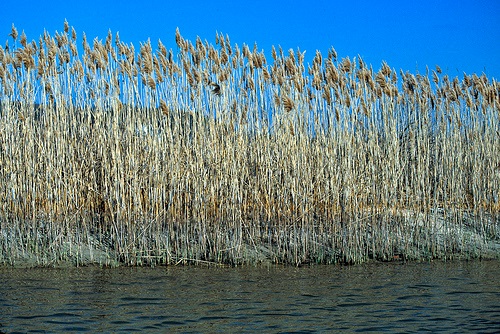
In the pond adjacent to my house, a few Phragmites plants appeared about 20 years ago. Those few stalks then turned into a patch covering 15 per cent of the pond. It took 20 years but I’ve now eliminated it – although it has cropped up elsewhere on our farm. I realize what I’ve seen for an increase is small in comparison to what has occurred in some areas, for example, Phragmites dominates the ditches along Highway 402.
More than 10 years ago, Dr. Scott Petrie and Long Point Waterfowl were one of the first to research the expansion of Phragmites in the Long Point area. At that time, the potential threat was just beginning to be realized. Its threat wasn’t widely known outside Long Point except amongst waterfowlers and naturalists.
The last session of the legislature debated Phragmites as a part of the Invasive Species Act. This bill has currently had its second reading.
My concern as a landowner is to have the tools to deal with Phragmites. The Invasive Species Act doesn’t provide this kind of help. Ideally, the Act should contain an education plan, funding and ways to prevent spread. The Act puts an emphasis on landowners to control invasive species, but doesn’t provide the wherewithal to make it happen.
This is not to say the Invasive Species Act is all bad legislation, it’s just big on stick and small on carrot.
Now in talking about tools, we realize the challenges of controlling Phragmites. It spreads through both seeds and rhizomes and is just about impossible to control without herbicide.
I recently attended a St. Williams meeting on Phragmites, hosted by the Ontario Phragmites Working Group and Long Point Ratepayers’ Association, that focused on methods of control. Control alternatives varied from manual extraction, to discing it under, to experimentation with herbicides, to prescribed burns. Herbicides are the best alternative for large areas, but the issue is approval needs to be granted for application over water.
When Phragmites colonizes an area, it spreads quickly and prevents the new growth of other plants. It’s also poor habitat for wildlife. It impacts humans as well through loss of recreational opportunities, negative tourism impacts, decline in property values and blocked sightlines.
 When Purple Loosestrife was the hot invasive plant, I was Parliamentary Assistant to the Minister of Natural Resources. In conjunction with the Ontario Federation of Anglers and Hunters, hit squads went into areas where Loosestrife was rampant and manually removed it. It’s not that simple with Phragmites, and we have yet to see this kind of commitment from government.
When Purple Loosestrife was the hot invasive plant, I was Parliamentary Assistant to the Minister of Natural Resources. In conjunction with the Ontario Federation of Anglers and Hunters, hit squads went into areas where Loosestrife was rampant and manually removed it. It’s not that simple with Phragmites, and we have yet to see this kind of commitment from government.
During the St. Williams symposium, we learned the City of Thomas has tackled Phragmites with minimal expenditure. The goal is to have the city Phragmites-free by 2020. Lambton Shores has also been aggressive and the plant is now 99 per cent under control in the municipality.
When Purple Loosestrife was first identified as an issue, it was thought to be the worst invasive plant in the province’s history – Phragmites now has that dubious honour. It will take a concerted effort by government, communities and individuals to take it on. It’s time to get serious! For the Silo, MPP Toby Barrett
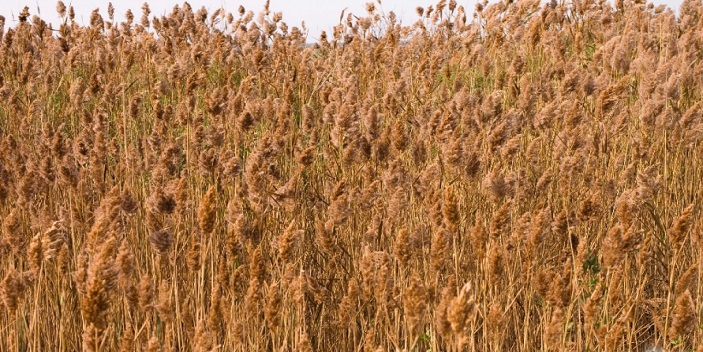
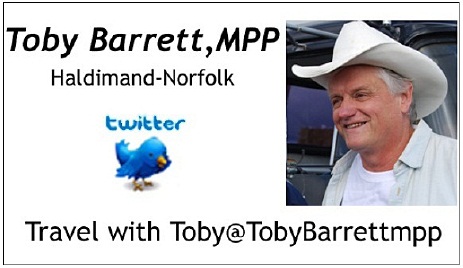
UPDATE FEBRUARY 2022
Battling phragmites is daunting but can be successful
Standing at the Joe Csubak Lookout on Front Road overlooking the Turkey Point Marsh, one can see a vibrant wetland that was a few years ago a sea of phragmites.
For those not familiar with this invasive species, Phragmites australis is an invasive non-native plant that grows densely, can reach nearly 19 feet in height, and crowds out native plants and animals. The plant grows mainly in wetlands and along roadway ditches, and it rapidly became the predominant plant in the Long Point Bay marshes.
Long Point has many designations signifying its importance to migrating birds of all sorts, from waterfowl to songbirds. For example, the Long Point Bay marshes are the most significant staging area for waterfowl in eastern North America. Rondeau Provincial Park, and nearby Point Pelee, are also important bird migration corridors. This is why Long Point and Rondeau were chosen for the first large-scale phragmites control efforts.
Control in the Long Point and Turkey Point marshes was a large undertaking, requiring emergency approval of herbicides for spraying. Spraying was done both by helicopter, and a Marshmaster, which is a specialized shallow draft boat outfitted with sprayers. The Nature Conservancy of Canada (NCC), along with private wetland owners and the Canadian Wildlife Service, control efforts have been successful on the Long Point and Big Creek National Wildlife Areas with most of the phragmites now eliminated. Those that have not been, will be.
NCC, working with several groups including Ducks Unlimited, the Federation of Ontario Cottagers’ Associations and the Ontario Federation of Anglers and Hunters under the Green Shovel Collaborative, is proposing to make the battle against phragmites a provincial one.
To begin, a completion of a cost-benefit analysis for prevention, treatment and control of phragmites in Ontario is being undertaken.
The cost-benefit analysis examines the impact phragmites has on the province for items ranging from agriculture impacts to tourism, property values, ecological impacts and road safety.
Estimates are the elimination of phragmites would benefit the province to the tune of $113.4 million annually across all these sectors. In addition, there is a one-time benefit of an estimated $357 million from not seeing the reduction in the value of waterfront property from phragmites establishment.
Phragmites growing in ditches is a major problem contributing to its spread. Seeds attach to passing vehicles and construction equipment working in the ditches and are transferred to new areas. For instance, the ditches along Highway 402 are thick with phragmites. It also gains a foothold in wet areas of private property and NCC is working with other partners to offer phragmites control for landowners in Norfolk County.
Elimination of phragmites is a multi-year process, but the big cost is in the first year with herbicide treatment and other elimination techniques. Estimated cost is $90 million to $109 million, depending on the extent of the control efforts.
Eliminating phragmites province-wide clearly has economic and ecological benefit.
Invasive Species Awareness Week is Feb. 28-March 4 this year. This is a great opportunity for people to learn more about invasive species, to makes efforts to stop the spread and to realize there is hope.
Toby Barrett MPP Haldimand-Norfolk
QUEEN’S PARK – Haldimand-Norfolk MPP Toby Barrett used a statement in the Ontario
Legislature to raise awareness about phragmites and give kudos to local groups for
their efforts in combating the invasive.
“In my riding, phragmites has been a major threat over the years. This invasive
plant infests our wetlands and pushes out native species,” Barrett said in the
Legislature. “In recent years, community groups have taken action to stop the spread
in the big Lake Erie marshes down at Long Point and Turkey Point. This is a great
example of local communities and government working hand in hand to address this
common threat.”
He noted that community groups are an integral part of combating invasive species.
“So many community groups across Ontario have been successful in preventing the
spread of invasive species and reducing damage through community control projects
and volunteer surveying efforts,” Barrett said. “Invasives can harm the biodiversity
of an ecosystem, which affects the beauty of our environment, the wildlife within it
and our livelihoods by disrupting farming, tourism and sustainable use of our
natural resources.”
Barrett also said the government has taken steps to propose the addition of 13 new
plants and animals to be added to the list of invasive species and invested more
than $2 milllion to support research, monitoring and management of invasive species.
Chatham-Kent MPP Rick Nichols brought up invasive species the following day, and
learned about the province’s strategy for feral hogs, an invasive species that has
been found in Norfolk County.
Besides asking for reports, the ministry launched a pilot project.
“Earlier this year, my ministry launched a pilot project, which includes
on-the-ground follow-up in areas where reports suggest there is a high likelihood
that wild pigs are present,” said John Yakubuski, Minister of Natural Resources and
Forestry. “At these locations, ministry staff are actively engaging with landowners
to learn as much as possible, and using trail cameras to confirm these reports.”
For more information, contact MPP Toby Barrett at 519-428-0446 or
toby.barrett@pc.ola.org
ONTARIO LEGISLATIVE ASSEMBLY
OFFICIAL HANSARD
Monday, Feb. 24, 2020
Invasive species
Mr. Toby Barrett: It’s Invasive Species Awareness Week in Ontario. Each day of the
week focuses on a different aspect of invasive species prevention, monitoring and
control. Many resources are available to learn about how invasive species are
spread, through horticulture or boating, for example, and good ways to stop it.
So many community groups across Ontario have been successful in preventing the
spread of invasive species and reducing damage through community control projects
and volunteer surveying efforts. Invasives can harm the biodiversity of an
ecosystem, which affects the beauty of our environment, the wildlife within it and
our livelihoods by disrupting farming, tourism and sustainable use of our natural
resources.
In my riding, phragmites has been a major threat over the years. This invasive plant
infests our wetlands and pushes out native species. In recent years, community
groups have taken action to stop the spread in the big Lake Erie marshes down at
Long Point and Turkey Point. This is a great example of local communities and
government working hand in hand to address this common threat.
Our government has taken steps to propose the addition of 13 new plants and animals
to be added to the list of invasive species. In 2019-20, Ontario invested over $2
million to support research, monitoring and management of invasive species across
our province.
Tuesday, Feb. 25, 2020
Invasive species
Mr. Rick Nicholls: My question is for the Minister of Natural Resources and
Forestry. As was mentioned yesterday, it’s Invasive Species Awareness Week across
the province. Many of us have in fact encountered problems with invasive species in
our ridings. Invasive species pose a significant threat to Ontario’s biodiversity,
recreational activities and tourism.
Can the minister inform us of what the Ministry of Natural Resources and Forestry is
doing to tackle the problem?
Hon. John Yakabuski: Thank you to the great member from Chatham-Kent-Leamington for
that question. This is Invasive Species Awareness Week, and I’d like to update the
House on what we’re doing.
Our government is committed to protecting Ontario’s environment for future
generations. We recognize that the most important thing, when it comes to invasive
species, is prevention. That’s why, earlier this month, we proposed to add 13 new
species to the invasive species list. By adding these species, my ministry will be
able to develop prevention and response plans so that quick action can be taken to
control and manage threats as they arise.
Last year alone, our government invested over $2 million in invasive species
programs and education. These funds go to support ongoing research, monitoring and
management of invasive species across the province.
I’ll have more to say in the supplementary.
The Speaker (Hon. Ted Arnott): The supplementary question.
Mr. Rick Nicholls: Thank you to the minister for that answer. Mr. Speaker, it’s
great to see what smart, pragmatic work our government is doing to protect and
conserve our environment. Initiatives like this are an example of the way in which
we are working to make changes that are good for the environment, good for our
communities and good for our economy.
I noticed that wild pigs are among the list of species under consideration. I know
that we don’t have a major wild pig problem in Ontario, but again, our government is
not taking the risk this species poses lightly.
Could the minister please tell the members of this House what measures we are
already taking to prevent a wild pig population from establishing in our province?
Hon. John Yakabuski: Thanks again to the member for that very important question. As
I mentioned earlier, prevention is the key when dealing with invasive species. Since
the fall of 2018, we’ve been asking the public to report wild pig sightings. This
plays a critical role in understanding the locations and number of wild pigs in the
province, and will inform future action.
Earlier this year, my ministry launched a pilot project, which includes
on-the-ground follow-up in areas where reports suggest there is a high likelihood
that wild pigs are present. At these locations, ministry staff are actively engaging
with landowners to learn as much as possible, and using trail cameras to confirm
these reports.
By adding to the list of invasive species, my ministry has further tools at its
disposal to regulate, prevent and respond as threats emerge.
Phragmites, a fast-growing invasive grass, is spreading across Minnesota in wetlands and along lakes and rivers. Pictured here are frost-covered phragmites australis in a wetland in Hede-Bazouges, France. Invasive phragmites is sort of like native phragmites on steroids, said University of Minnesota professor Dan Larkin, a MAISRC scientist who studies aquatic ecology.
UPDATE ~ Is toxic wild parsnip our latest invader?
This July I had an opportunity to take a break from worrying about invasive phragmites and common buckthorn upon the discovery of what looks like a second-year stand of toxic wild parsnip on my farm.
What was a small sun-lit sheep pasture originally seeded by my grandfather had become overrun with a hundred or so tall yellow-green flowers – the first appearance in Norfolk of wild parsnip to my knowledge.
Toxic wild parsnip is yet another invasive species, originating in Eurasia, that has the nasty characteristic of causing painful blisters in the presence of sunlight. There have been some well-publicized cases in eastern Ontario. A Renfrew woman ended up with blisters from contact and now must avoid exposing her skin to sunlight for three years.
The few plants found on my farm pale in comparison to the estimated 200 miles of roadway infested in the Ottawa area. Wild parsnip has also been confirmed at the Grand River in Haldimand County.
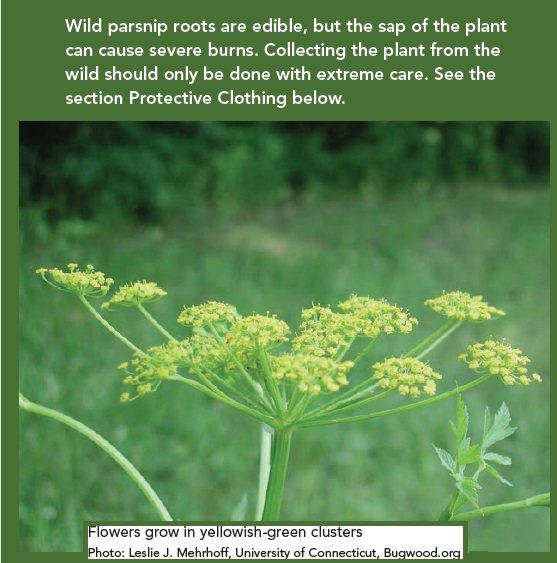
My battle with wild parsnip, and against phragmites and common buckthorn before that, highlights the shortcomings of the Invasive Species Act. While it’s good Ontario takes invasive species seriously enough to be the only province with its own invasive species legislation, one of my concerns is the legislation doesn’t give landowners the tools they need.
Actions speak louder than words. The Ontario Phragmites Working Group is currently waiting for word on a request to have the province expedite an emergency approval for herbicides to kill phragmites over water. I ask why this isn’t being made a priority.
Wild parsnip, common buckthorn and phragmites are a serious concern. The good news is, with a concerted effort, invasive plants can be eliminated or at the least controlled. Such is not the case with aquatic invasive species. As was seen with sea lamprey in the 1950s, the Great Lakes are just too vast to control an aquatic invader once it’s established. While lamprey can be kept in check, such is not the case if Asian carp were to ever establish in the Great Lakes.
Are recent cases of grass carp being found in Lake Erie, including two in the Dunnville area, a precursor to a full-out invasion? Many people debate this topic in coffee shops and tackle shops across the riding. Grass carp found near Dunnville were both sterile, but fertile fish have been found in an Ohio Lake Erie tributary. Grass carp only eat vegetation, but the establishment of grass carp in Lake Erie would change the balance of the ecosystem forever. This is an ecosystem still adjusting from other invaders such as zebra mussels and round gobies.
And then there’s the potential of other species of Asian carp invading the Great Lakes. Ramifications for Ontario’s sport and commercial fishing would be in the billions of dollars.
There is hope, though. The best science is looking at ways to keep Asian carp in control and out of the Great Lakes in both the short and long term.
Technology has made the world smaller in the 20th and 21st centuries. As people have transported goods from one continent to another, they have brought with them unwanted species. I look forward to the day technology will also be able to better control invasives. Haldimand-Norfolk MPP Toby Barrett.
UPDATE August 8th 2016 from @thesiloteam Twitter
The Silo @thesiloteam Aug 8
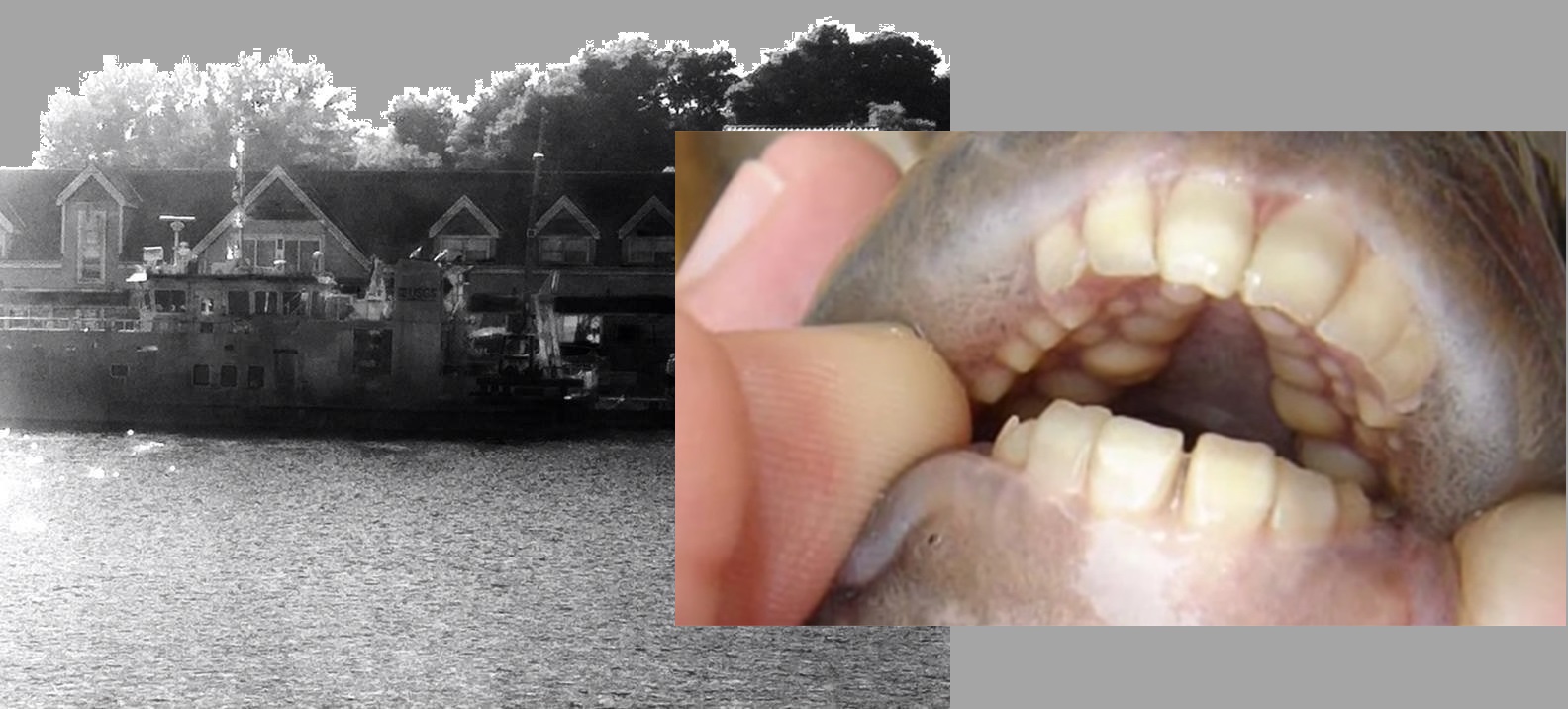
Sources report #InvasiveSpecies found Port Dover, Ontario #LakeErie Bay- USGS Coastal and Ocean Science @USGS Muskie & Department of Fisheries and Oceans (DFO) Canada Vessel spotted last 24hrs
UPDATE Aug 12th
Could they be investigating the #PACU fish? via RT https://www.rt.com/viral/355642-human-toothed-fish-pacu/ River Monsters
UPDATE The phragmites invasive chokes out everything
Mention invasive species and it conjures up images of zebra mussels plastering the bottom of Lake Erie or lamprey clenched to the side of a trout.
But invasive species aren’t limited to water, and aren’t necessarily unattractive. In fact, the greatest land-borne threat to the province’s ecosystems used to find its way into decorative arrangements in people’s homes. Phragmites is the tall reed with feathery tops that is proliferating the province’s wetlands, ditches and just about anywhere water accumulates.
The war against phragmites is a tough one – the plant is resilient, spreading both from tubers underground and seeds above it. On my own farm, I saw a few stalks in my pond grow to cover 15 per cent of the area. It took me years to exterminate it, and it’s now making a comeback.
As Parliamentary Assistant to the Minister of Natural Resources when purple loosestrife was invading marshes, I saw the threat taken seriously and solutions sought to tame the invasion. I have yet to see a concerted effort provincially to take on this latest threat.
The Invasive Species Act may be the first provincial invasive species legislation, but it doesn’t do enough to deal with control. It mandates landowners to control invasive species, but doesn’t provide the tools to do the job.
The key to preventing further expansion of phragmites is early detection and rapid response; however these have not been priorities for the Ontario government. Roadside ditches, including provincial highways, harbour and provide a conduit for the invader.
Different groups have banded together to battle the scourge. St. Thomas aims to have the city free of phragmites in three years. Lambton Shores, north of Sarnia, has it 99 per cent under control.
The Phragmites Working Group is bringing together experts to educate the public and foster control. The Great Lakes and St. Lawrence Cities Initiative produces an information package on control for municipalities and individual landowners (http://glslcities.org/wp-content/uploads/2015/05/Phragmites-Facsheet-4pager-EV-v21.pdf). It is also working with NASA to map the spread.
One of the controls advocated by the working group is legalizing the same chemical measures in Ontario that are available in the United States. One of the challenges is glysophate – which is legal for use on land provincially but not over water. In the United States, glysophate can be used over water and, in addition, imazapyr is also approved for phragmites control. Often eliminating a stand involves mowing, compressing, prescribed burn, hand-pulling or flooding, along with herbicide application. A request by the working group for an emergency registration of appropriate chemicals to control phragmites has yet to result in approval.
Years ago, I bought two goats for my kids – they ate just about anything, including my phragmites. Researchers in Maryland, found goats could reduce a phragmites stand by 80 per cent in a few weeks. In Europe, livestock grazing is used to knock back phragmites.
MPP Monte McNaughton has been pushing to have phragmites added to the Noxious Weed Act. That would mean municipal officials could instruct landowners to deal with phragmites on their property. Again – no support from government.
Phragmites needs to become a priority before it chokes out all other wetland plants and wildlife. All concerned need to band together to move it up on the government’s priority list. By MPP Toby Barrrett
UPDATE-
The recent discovery of two Asian carp in a pond in Toronto stands as a stark reminder of the potential cost and the need for education with respect to the ongoing problem of invasive species.
Exactly how those two fish ended up in an enclosed pond might never be known, it’s a good bet they were put there by a human. This activity is not only illegal, but also puts the entire Great Lakes watershed, a multi-billion-dollar fishing industry and a boating-related tourism industry at risk. Studies have shown it would take as few as 20 Asian carp to form a reproducing population.
Worldwide the cost of invasive species is estimated in the billions. In Canada, invasive plants alone cost the farming and forest industries an estimated $7.3 billion annually. The impact of zebra mussels in Ontario is between $75 and $91 million a year.
Getting back to Asian carp, the largest threat of this species entering the Great Lakes remains through the Chicago Area Waterways System. In the wake of the report of the Great Lakes Mississippi River Interbasin Study, the US Army Corps of Engineers continues to block access through the Chicago Ship and Sanitary Canal at the Brandon Road lock.
While clearing brush on my farm this summer, I came to realize the significance of another invader – the common buckthorn.
Common buckthorn is native to Eurasia and was first brought to North America as an ornamental shrub in the 1800s. Its use wasn’t just in gardens, but also in farm fencerows and windbreaks. It soon spread into woodlots. It is spread both through the large number of seeds it produces and when birds eat its berries. The problem arises when it forms dense stands and crowds out native plants. It also hosts agricultural pests such as oat rust and soybean aphid.
Phragmites is the largest worry currently with invasive plants. Although it can crowd out native plants in wetlands and wet areas, many people are not aware of the significant hazard it poses even though it lines our provincial highways. Eradication will take a massive effort that will cost millions of dollars.
Will buckthorn or Japanese knotweed be the next phragmites? Let’s step back in time and imagine the lack of problems if these plants had been controlled when first discovered.
In Haldimand, wild parsnip has been discovered along the Grand River. When established, it can also crowd out native plants and its sap contains a chemical that can cause a reaction to sunlight in humans – as does giant hogweed.
The province’s invasive species web site is a great tool – http://www.invadingspecies.com – in fact I use it often.
Other measures to combat invasive species need be considered. Bringing back the province’s junior ranger program to southern Ontario and having its members tackle issues like buckthorn and phragmites could be an option. Norfolk County has its Norfolk Environmental Stewardship Team or NEST, formed in the wake of the cancellation of the junior ranger program.
Getting rid of an invasive alien species is no easy task. Speed is of the essence, coupled with public awareness and funding, when tackling invasive threats – This is something researchers and experts preach on both sides of the border, and hopefully the message is getting through in both countries.
Haldimand-Norfolk MPP Toby Barrett